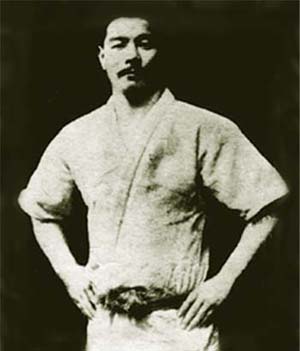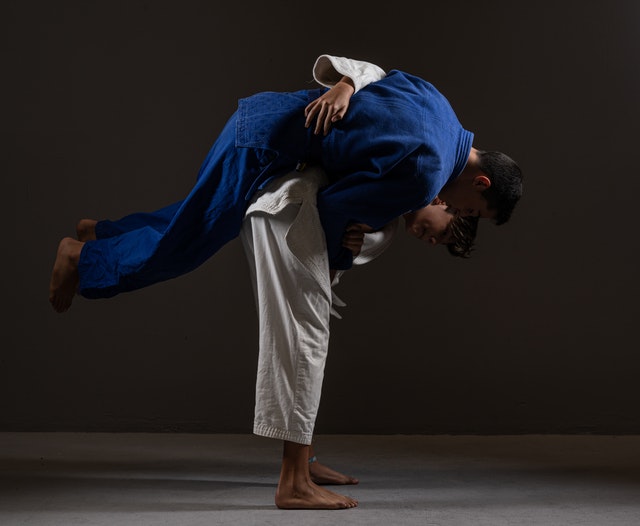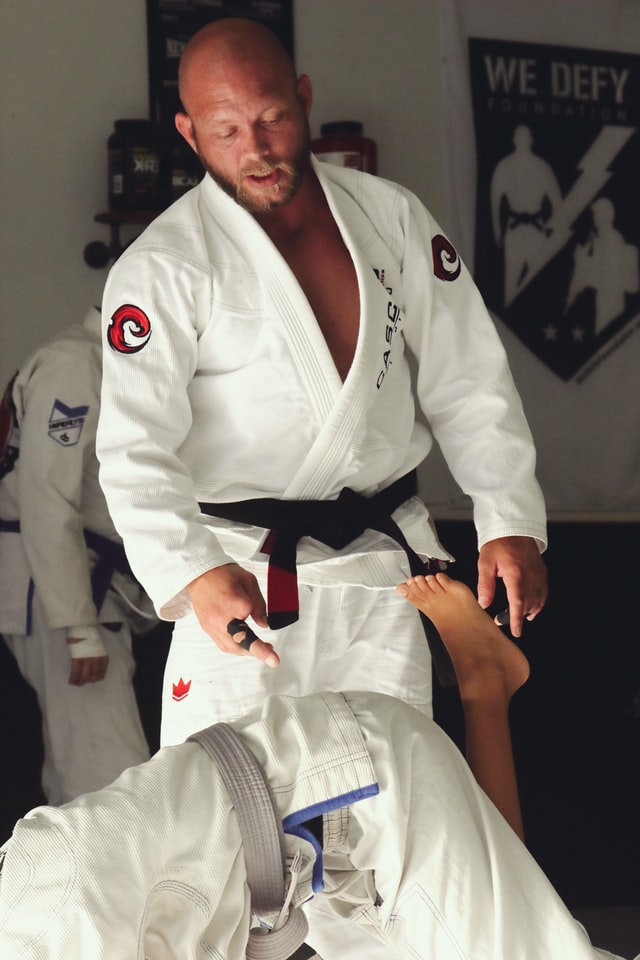BJJ vs. Capoeira: Who would win? 2025 Update
Among so many martial arts, the Brazilian Jiu-Jitsu and Capoeira are two of the best most interesting ones to learn. They both originated from Brazil, however are quite different. These martial arts combine different fighting techniques, some that are only for show, while others are for seriously injuring opponents. Whatever techniques these martial arts include, they are perfectly suitable for people of all ages.
Kids can develop their bodies and minds by learning these fighting styles as well. They can help in building courage and confidence in every human being. However, the two Brazilian arts have a lot of dissimilarities as well. We will see how these two fighting styles differ from each other. We’ll also discuss the similarities that they have.
BJJ and Capoeira: The Differences
BJJ refers to Brazilian Jiu-Jitsu, which is one of the most popular and complex martial arts of today. This sport teaches self-defense by controlling the opponent in the ground and gaining a dominant position while eventually submitting the opponent.
Usually, this combat sport is based on several techniques, e.g., grappling, ground fighting, and submission holds. In a self-defense scenario, it basically acts as a leverage for a smaller and weaker person who is being dominated by a heavier person than him or her. It helps to take the opponent to the ground by using weight distribution leverage. You’ll gain more strength and gain control over another person’s body.
It can protect you in the streets and give you the courage to fight back when attacked. The best part is, you’ll grow stronger and gain confidence by learning BJJ.
Capoeira, on the other hand, is a beautiful form of martial art and dance. It’s not destructive like BJJ; somewhat, this Afro-Brazilian combat is mellifluous with the combination of music and acrobatics. The art combines dance, acrobatics, and music disguising different forms of fighting martial arts. So, the critical difference between Capoeira and BJJ is that Capoeira allows to express oneself through fighting techniques expressed through dance, while BJJ is a traditional form of fighting with focus on the ground and self-defense.
By learning Capoeira, you’ll get a clear understanding of your body. It’s imperative to anticipate the opponent’s next move while applying Capoeira.
History of BJJ
The history of BJJ begins a century ago in Brazil. Though initially it was born in Japan, later it became a part of the Brazilian culture. It was built for Samurai Warriors so that they could save themselves in a lost battle. Geo Omori took the first initiative in introducing Jiu-Jitsu by opening a Judo school in Brazil in 1925.
His disciples Luiz Franca and later Mitsuyo Maeda, is one of the Kodokan’s groupwork experts who were sent overseas to spread this art across the globe. Maeda started his Jiu-Jitsu journey through Gracie Family in Brazil. The family’s son Hello Gracie introduced a softer but pragmatic Jiu-Jitsu which focused on using leverage rather than strength.
Both the Gracie family and Maeda promoted the same martial arts with a different perspective. Gracie family emphasized more on ground fighting which is still evident till today. Similarly, Maeda and Luiz Franca is prominent for their influential use of footlocks.
Speaking of the origin of the name Jiu-Jitsu, this name is derived from an older romanization from its spelling in the West. In modern Hepburn Romanization, the word is spelled “Jujutsu”. If we translate the word “Jiu-Jitsu”, the literal translation comes out “gentle art”. Although the Japanese government officially mandated the name as Judo, Brazil still preferred to keep it jiu-jitsu.
When the Gracies flew to the US, their followers started calling it “Gracie jiu-jitsu” while the non-Gracies have given the term Brazilian Jiu-Jitsu or BJJ. Members of the Gracie family each have built their personal forms of jiu-jitsu which were all unique in style.
They had personalized names such as Ceaser Gracie jiu-jitsu or Renzo Gracie Jiu-Jitsu. Imitating, the Machado family had also built up unique styles, which they used to call Machado Jiu-Jitsu (MJJ). Consequently, four major branches of BJJ have been developed ever since in Brazil. They are Gracie Humaita, Gracie Barra, Carlson Gracie Jiu-Jitsu, and Alliance Jiu-Jitsu. Hence, BJJ being born in Japan has become native in Brazil.

History of Capoeira
Now that we’ve learned about BJJ, here’s the history of Capoeira presented to you. Capoeira is an old-aged martial art that originated back in the 16th century. It was the time Portugal colonized Brazil. The Portuguese used to buy, sell, and trade African people for slavery. In the Brazilian colony, these African slaves were forced to work inhumanly.
From Dr. Desch-Obi’s Capoeira history records, it’s evident that Capoeira was initialized following an ancestral tradition named N’golo/Engolo (modern name – Angola). This traditional dance included kicking, headbutting, slap boxing, walking on one’s hands, deception, evasion, etc.
Inspired by N’golo, a martial setting grew, which focused more on combat and warfare. As the Atlantic slave trade grew more extensive, this traditional movement spread across many countries of the globe in different names such as America, Brazil (Capoeira), the Caribbean (Damnye), and the United States (knocking and kicking).
Day by day, the African slaves were trying to find out a way of liberation. By utilizing Capoeira as combat, several enslaved people freed themselves. Some of them formed a multi-ethnic state where other colonial slaves could get freedom. They were called the Quilombo. They used to practice Capoeira to achieve freedom from the Portuguese.
However, at the end of slavery decades, Capoeiristas started using their skills in street fights. As a response, the Brazilian Republic had to prohibit Capoeira in the entire country. Eventually, by the 1920s, Capoeiras prohibition was lifted.
Martial artists started taking Capoeira as a fighting style , forming martial arts performancse. Gradually, it became a popular throughout the world. Many foreign students and tourists have now started visiting Brazil to learn this beautiful martial art.
BJJ and Capoeira: Rule Differences
BJJ is usually divided into two groups – the Gi and the Non-Gi. We’ll be referring to the rules related to the Gi as it’s the most commonly practiced style.
You can’t slam your opponent in a BJJ match or practice. Also, talking to the referee and leaving the mat to escape submission is a serious violation of the rules. In order to get sweep points, you have to involve your legs, or else you’ll achieve no points. Following, neck cracks are not allowed in BJJ.
However, Capoeira also has some ground rules which are quite different from BJJ. Unlike BJJ, Capoeiristas can fight up to several hours when they are performing roda. The fight should be only a pretentious art, yet cannot directly contact the opponent just like BJJ. Here, the fight is more informal depending on the tempo of Brazilian music. Well, as a main part of the game, music is a must in capoeira. There is also a belt system in Capoeira where green belt indicates a novice fighter and the white denotes the most professional fighter.
Belt System and Progression Differences
Speaking of the belt system, both BJJ and Capoeira might seem quite similar in ranking, but there are some distinctive features that make these two unique forms of martial arts. In Brazilian Jiu-Jitsu, the practitioners are ranked according to the advancement in their skill level.
Each martial artist is given a unique colored belt as per their experience and technical skill. Usually, white belt doesn’t need any minimum age to be earned. Green, Orange, Yellow, and Grey colored belts are for kids aged under sixteen. They are called the junior belts. As they start experiencing it in years, they earn the leverage of gaining blue and purple belts. For this, the practitioners must be above sixteen years old.
However, it takes two more years to gain the brown belt. Gradually, as the experience tier levels up, the martial artists tend to go more closer in achieving black, white and red combinational belts. Notable martial artists from other disciples have the leverage of achieving black belt without an intermediate rank. However, this rule is now becoming obsolete.
If we talk about Capoeira, the ranking system totally depends upon masters. This martial art performance never had a formal agreement about the belt system. So, if a Capoeiristas master doesn’t support any system at all, his disciples would graduate without ranks. In the modern age, the commonly used system supports colored ropes as ranking the practitioners of capoeira is called Corda.
The Brazilian Capoeira Confederation selected the colors of Brazilian flag, green, yellow, blue, and white for the ranking. Kids and adults have different ranking systems according to years of experience. However, different influential groups use several unique systems. For example, Porto da Barra focuses on belts that represents Brazilian slavery history. If we notice the Angola school system, we can observe that there are no belts according to tier level, but there are different ranks visible. These ranks are simply student, treinel, professor, contra-mestre, and mestre.

Class / Training Differences
In training, BJJ’s emphasis is more on submissions without the use of strikes. There are three fundamental technique drills in BJJ that allows the practitioners to boost up their strength. The first technique drill includes practicing BJJ against a non-resisting partner, following isolation sparring and full sparring. In isolation sparring, only certain techniques are used, but full sparring allows the submission of the opponent using different techniques.
The practitioner must have physical conditioning too. However, the core techniques include defending techniques. Before submission, the practitioner needs to gain some dominant positions for attaining leverage. These positions are side control, knee on belly position, full mount, back mount, north south position and guards or grappling. After gaining control over opponent’s body, the BJJ disciple can take down the opponent by joint locks or, chokes.
Capoeira training differs wholly from BJJ. It basically focuses on using the lower body to kick, seep and take down the opponent. The upper body acts as an assistance to those movements. Sometimes the upper body can also be used for attacking. Well, as the performance is meant to be shown with the rhythm of a traditional song, it has a series of techniques that resembles unpredictability and versatility.
A vital move is Ginga, which is important for both attack and defense purposes. It is a technique that keeps the practitioner in constant motion from getting caught, while misleading the opponent for attack or counter-attack. The attacks are mostly done by legs with direct or swirling kicks, rasteiras or leg sweeps, tesouras or knee strikes. Some other important styles include elbow strikes, punches, and other forms of takedowns. In this case, head strike is also a vital move.
However, the defense must be completely non-resistant. Capoeiristas are forbade from using evasive moves while fighting. In Capoeira, acrobatics take a huge space in the training field. A series of acrobatic moves let the practitioner to balance himself even in a fall-down.
Clothing and Equipment (differences/similarities)
Every martial has its own uniform. It resembles the uniqueness of that specific art. BJJ and Capoeira also have uniforms that carry similarities and dissimilarities from each other. The Brazilian Jiu-Jitsu practitioners wear Gi or Kimono as their fighting suit. It’s similar to Judo Gi. A kimono is made of lighter material and tight cuffs on the pants and jacket.
The uniform allows the practitioner to be benefitted from a tight-fit, less trouble material. It is designed to gain leverage in getting heavier opponents down. BJJ uniforms also include colored belts according to experience and training level. The practitioners will require some safety measures because of the fighting. As a result, the followers wear rash guards, mouth guards, groin protectors, head gear, knee pads, and gear bag to stay safe.
Having similarities in the belt system, Capoeira also includes belt system to some extent. Although every school doesn’t necessarily have to follow this rule. However, there are differences regarding the belt color of BJJ and Capoeira. Both of the martial arts don’t value the same ranking and don’t have the same colored belts as well. They only have similarity to the fact that adults and kids belt colors and ranking system are distinctive in nature.
There is another major dissimilarity between the two, art performance. Unlike BJJ, Capoeira has a special pant named Abada. It’s a pant that is generally white in color with a school logo on the left pair, used for the rhythmic dance of Capoeira. The white color represents the pure and righteousness, a symbol of purity. As this martial art performance doesn’t emphasize on grappling or any form of fighting, Capoeira practitioners don’t necessarily require guards as BJJ disciples do.

BJJ vs Capoeira: Pros and Cons
As we are comparing BJJ and Capoeira, we need to look at the pros and cons too.
Pros
BJJ is a martial art that allows the practitioner to grow constantly. Even the chubbiest person in a class can learn how to master the art of BJJ in a few years. The good thing about this sport is that people from any age can start practicing BJJ. Capoeira allows the same benefits.
However, Capoeira provides mental peace to the practitioners. With the rhythm of music, it helps the mind to refresh and relax. Capoeiritas perform as if they are about to hit the opponent, but apparently it is all pretentious.
Cons
The first disadvantage of BJJ includes grappling techniques or, in simple words, fighting. You need to be extremely good at wrestling/Judo or else, the opponent can cause serious damage.
However, Capoeira might seem an excellent sport as a martial art, but the dancing movements don’t actually work as self-defense. In order to protect oneself, the practitioner can’t use Capoeira. Again, Capoeira requires physically fit people. Without years of training, serious damage can occur.

BJJ vs Capoeira: Which is Better for Self-defense?
From the previous discussions, we can observe that BJJ is the better martial art for self-defense. On the other hand, Capoeira is a combination of dance and acrobats that imitate the fighting styles yet don’t actually perform real fights. So, the predominant reasons why BJJ is better than Capoeira for learning self-defense is given below:
BJJ allows the practitioner to wrestle with the opponent and take him down to the ground. Some grappling techniques are used to physically take control over the opponent’s body. Usually, these techniques involve kicks on the joint-locks so that the opponent can’t get back up. Also, it acts as leverage for a weak person to take over a healthier and stronger person’s body and conquer victory. In contrast, Capoeira doesn’t allow any form of contact.
It contains movements that are not functional. Apparently, it is a treat to the eyes, with the sweet rhythm of the music in ears, but, completely not a fighting game. In fact, fighting is strictly prohibited in this sort of art. Therefore, we can definitely say that BJJ is more efficient than Capoeira for self-defense.
BJJ vs Capoeira for Kids
Both of the martial arts carry significant steps for building up a person’s body and mind. These are better for kids too! If you notice in the previous sections, you will see both BJJ and Capoeira offer distinctive belts to support the kids also. Therefore, we’ll see how are these martial arts affect kids:
BJJ is highly useful in building kids’ physical strength. It allows them to learn how to take a man down to the ground even if he’s bigger than the kid. It not only builds up strength in kids but also courage and confidence boost up very quickly. Again, it is suitable for encouraging kids to make them take care of themselves on their own. They learn how to make quick decisions and solve problems in any situation.
Now, focusing on Capoeira, it’s evident that Capoeira also allows kids to benefit. This art includes dancing, acrobatics, rituals, with nice music flowing on ears. It teaches how to bring self-discipline, how to control oneself. By adopting this martial art, kids become more confident and courageous.
The music naturally attracts their concentration and helps them to train well. Undoubtedly, it guides them to the path of conflict resolve without any violence. Moreover, it allows kids in muscle building from the beginning of their childhood. Kids can be motivated by the belt awards that help them to focus more on training.
So, we can say that BJJ and Capoeira both are fantastic martial art teaching techniques that develop both physical and mental health.
BJJ vs Capoeira – Conclusion
Whether martial arts teach us fighting or fighting styles, both are important. These arts help us to broaden our senses and increase our strength. Though there are some differences between BJJ and Capoeira, these two sports are from the same origin. They share almost a similar concept but vary in style. We tried to provide the contrasts, pros and cons as much as possible between the two performances. We hope this article will give the reader a clear understanding on which sport he/she needs to learn according to his/her interest.
